Dairy Trade - Cruelty Free Milk?
Milk makes up quite a large part of the human diet for many of us. Milk can be purchased from major hypermarkets, markets and farms to local grocery stores in a wide variety of shiny white, blue or purple plastic, cardboard or glass containers. Pictures of children and families smiling happily with cows and farm animals or just comical cow drawings encouraging you to drink your milk is part and parcel of government advertising.
International Animal Rescue Foundation documents mostly on animal welfare and conservation issues locally and internationally of which we debated long and hard about publishing quite an extreme article that depicts just how the milk process works and the cruelty inflicted to cows just to provide a tasty white drink that is high in calcium, minerals and Melatonin a naturally sourced property. Synthetic and natural Melatonin aides sleep, relaxation and in synthetic pill form helps to reduce many childhood neurological and behavioral disorders such as Attention deficit hyperactivity disorder, Attention Deficit Disorder and Gilles de la Tourette syndrome being some of the common disorders that practitioners prescribe this medicine for and encourage children to drink more milk for.
For many years Animal Rights Activists have been battling dairy farmers, supermarkets, and slaughterhouses in vain to try and stop the cruelty that is inflicted to dairy cows. This can range from forced insemination straight after the female cow has given birth, the removal of calf after birth for the veal trade, transportation locally and globally down to the grotesque manners in which dairy cows are housed. Dairy trade may well look appealing to you the general public but what if we showed you the real side of the dairy trade. The horror inflicted daily just to provide you with a few liters of milk?
History;
Dairy farming is a class of agricultural enterprise for long-term production of milk, which is processed (on-site or at a dairy plant) for eventual sale of a dairy product. Dairy farming has been part of agriculture for thousands of years. Historically it has been one part of small, diverse farms. In the last century or so larger farms doing only dairy production have emerged. Large scale dairy farming is only viable where either a large amount of milk is required for production of more durable dairy products such as cheese, butter, etc. or there is a substantial market of people with cash to buy milk, but no cows of their own.
There are many different forms of dairy collection that range from hand milking, vacuum bucket milking, milking from pipelines, milking parlors, herringbone and parallel parlors, rotary parlors, automatic milker takeoff that can be very cruel to the milking herd and lastly fully automated robotic milking. All forms of milking are undertaken in a conveyor belt fashion that see’s hundreds of thousands of liters of milk produced a year every for the consumer.
Whilst this Wednesday’s article is focusing on “milk trade” we must also highlight the other practices that see’s many milking cows abused then later slaughtered for the human food chain. Butter - Butter’s origins go back about 10,000 years to the time when our ancestors first began domesticating animals. Today, butter in its many flavorful forms is the world’s most popular fat. As a versatile spread, a delicious enhancer for so many foods, and the essential ingredient for baking, butter’s simple goodness has no equal…
The first reference to butter in our written history was found on a 4,500-year-old limestone tablet illustrating how butter was made. It is generally believed the word butter originates from the bou-tyron, Greek for “cow cheese”, however it may have come from the language of cattle-herding Scythians.
Butter was used as food by ancient tribes of Asiatic India, as well as for burning in primitive lamps and smeared on skin to protect from the cold. In early times, unlike today, butter was so costly it was used in religious ceremonies. It still is today in India and Tibet.
In ancient Rome, butter was valued cosmetically. Not only was it used as a cream to make skin smooth, but Greeks and Romans massaged it into their hair to make it shine. Much esteemed for its perceived healing properties, butter was also used in poultices to fight skin infections and burns. The ancient Egyptians even valued it as a cure for eye problems.
During the T’ang Dynasty in China, clarified butter represented the ultimate development of the Buddha spirit. The ancient Irish, Scots, Norsemen and Finns loved and valued butter so much they were buried with barrels of it.
Christian missionaries travelling in central Siberia in 1253 mentioned a traditional fermented drink, kumyss, which was served with generous lumps of butter floating in it. In Northern Europe, in centuries past, butter was credited with helping to prevent kidney and bladder stones as well as eye maladies. (This was probably thanks to butter’s vitamin A content.)
Sailors in Elizabethan times were guaranteed 1/4 lb of butter a day in their rations, and it was an old English custom to present newlyweds with a pot of this creamy delight as a wish for fertility and prosperity.
It must also be noted that cows are not the only animal that produces milk. Humans, goat, sheep, Indian buffalo, camel, llama and even horses have and still are used for the production of milk. In the modern world most humans will consume mainly milk from cows and goats whereas in the still developing world sheep, goat, camel, buffalo and llama milk are used for milk production mainly due to price, difference in taste, allergies that derive from “cows milk”. Its not uncommon to see small or large families in Asia, Africa or even Great Britain with individual cows or goats that are milked to feed the family.
Cruelty;
The practice of dairy production in a factory farm environment has been criticized by animal welfare activists. Some of the ethical complaints regarding dairy production cited include how often the dairy cattle must remain pregnant, the separation of calves from their mothers, how dairy cattle are housed and environmental concerns regarding dairy production.
The production of milk requires that the cow be in lactation, which is a result of the cow having given birth to a calf. The cycle of insemination, pregnancy, parturition, and lactation, followed by a “dry” period of about two months of forty-five to fifty days, before calving which allows udder tissue to regenerate. A dry period that falls outside this time frames can result in decreased milk production in subsequent lactation. Dairy operations therefore include both the production of milk and the production of calves. Bull calves are either castrated and raised as steers for beef production or veal.
An important part of the dairy industry is the removal of the calves off the mother’s milk after the three days of needed colostrum, allowing for the collection of the milk produced. In order for this to take place, the calves are fed milk replacer, a substitute for the whole milk produced by the cow. Milk replacer is generally a powder, which comes in large bags, and is added to precise amounts of water, and then fed to the calf via bucket or bottle.
Milk replacers are classified by three categories: protein source, protein/fat (energy) levels, and medication or additives (e.g. vitamins and minerals). Proteins for the milk replacer come from different sources; the more favorable and more expensive all milk protein (e.g. whey protein- a bi product of the cheese industry) and alternative proteins including soy, animal plasma and wheat gluten. The ideal levels for fat and protein in milk replacer are 10-28% and 18-30%, respectively. The higher the energy levels (fat and protein), the less starter feed (feed which is given to young animals) the animal will consume. Weaning can take place when a calf is consuming at least two pounds of starter feed a day and has been on starter for at least three weeks. Milk replacer has climbed in cost US$15–20 a bag in recent years, so early weaning is economically crucial to effective calf management.
Rotary milking parlour. Spaces standings for 60 cows. capable of milking 350 cows in one hour.
Because of the danger of infection to humans, it is important to maintain the health of milk-producing cattle. Common ailments affecting dairy cows include infectious disease (e.g. mastitis, endometritis and digital dermatitis), metabolic disease (e.g. milk fever and ketosis) and injuries caused by their environment (e.g. hoof and hock lesions).
Lameness is commonly considered one of the most significant animal welfare issues for dairy cattle, and is best defined as any abnormality that causes an animal to change its gait. It can be caused by a number of sources, including infections of the hoof tissue (e.g. fungal infections that cause dermatitis) and physical damage causing bruising or lesions (e.g. ulcers or hemorrhage of the hoof). Housing and management features common in modern dairy farms (such as concrete barn floors, limited access to pasture and suboptimal bed-stall design) have been identified as contributing risk factors to infections and injuries.
Exposed abuse;
Over the past decade farmers have been complaining that animal and welfare activists have accounted for mass loss of farm production through direct and indirect actions against cattle farmers. Farmers have had to resort to drastic security measures to secure their farms thus ensuring what happens on the inside is not portrayed on the outside. Ag-Gag laws within the United States have been drafted up by government that is aimed at “prosecuting those that expose abuse on farms”. Ag Gag was devised in a way to protect American interests.
Anti-whistleblower bills (“ag-gag” bills) seek to criminalize whistleblowing on factory farms, keeping Americans in the dark about where their food is coming from. Whistleblowing employees have played a vital role in exposing animal abuse, unsafe working conditions, and environmental problems on industrial farms.
Instead of working to prevent these abuses from occuring, the agribusiness industry has been working to prevent people from finding out about such problems by supporting anti-whistleblower bills.
Anti-whistleblower bills effectively block anyone (within US states) from exposing animal cruelty, food-safety issues, poor working conditions, and more in factory farms. These bills can also suppress investigations into cruel horse soring, mistreatment of animals in laboratories, and other abuses. These bills could do this by:
- Banning taking a photo or video of a factory farm without permission,
- Essentially making it a crime for an investigator to get work at a factory farm, or
- Requiring mandatory reporting with impossibly short timelines so that no pattern of abuse can be documented.
What is Big Ag’s big secret?
These anti-whistleblower bills raise the question, “What does animal agriculture have to hide?” By criminalizing whistleblowing, these bills would make important undercover investigations impossible—investigations like:
- The HSUS exposé of calf abuse at a Vermont slaughter plant that led to the plant’s closure and a felony criminal conviction
- The HSUS investigation of a cow slaughter plant in California, which prompted the largest meat recall in U.S. history and criminal convictions, too
- The HSUS investigation of Wyoming Premium Farms, which documented rampant animal abuse and brought charges of criminal animal cruelty for nine workers
Within the United States covert welfare officers have already fallen foul of such Ag-Gagging laws. While the United States believes this is to protect the interests of America and the overall economy such cruelty practices (see video below) must continue to be exposed so that you the consumer are aware of what you are buying, placing your money into, and consuming. Regardless of whether one is damaging the economy by highlighting such abuses one must continue to ask yourself, would you allow a human to be treated in this manner? Cow, horse, pig, duck, or any animal (we are all living-beings) we all feel pain and suffering so no animal no living being should be subjected to such abuses and no enforcement officers should ever be silenced.
There is a great deal of variation in the pattern of dairy production worldwide. Many countries which are large producers consume most of this internally, while others (in particular New Zealand), export a large percentage of their production. Internal consumption is often in the form of liquid milk, while the bulk of international trade is in processed dairy products such as milk powder.
Injury and Illness within the Dairy trade;
There are many injuries and illness that have been documented within the dairy agricultural trade whether it be deliberate or from poor animal husbandry disease and poor husbandry is rife throughout the entire farming industry. the more people fund this trade the longer these abuses continue.
Mastitis is the inflammation of the mammary gland and udder tissue, and is a major endemic disease of dairy cattle. It usually occurs as an immune response to bacterial invasion of the teat canal by variety of bacterial sources present on the farm, and can also occur as a result of chemical, mechanical, or thermal injury to the cow’s udder.
Milk-secreting tissues and various ducts throughout the udder can be damaged by bacterial toxins, and sometimes permanent damage to the udder occurs. Severe acute cases can be fatal, but even in cows that recover there may be consequences for the rest of the lactation and subsequent lactations.
The illness is in most respects a very complex disease, affected by a variety of factors: it can be present in a herd subclinically, where few, if any, symptoms are present in most cows. Practices such as close attention to milking hygiene, the culling of chronically-infected cows, good housing management and effective dairy cattle nutrition to promote good cow health are essential in helping to control herd mastitis levels.
Mastitis is most often transmitted by contact with the milking machine, and through contaminated hands or other materials, in housing, bedding and other equipment. During the 1960s, a five-point plan was devised by the National Institute for Research into Dairying, aimed at providing a strategy for the reduction and control of mastitis at farm level, which in adapted form is still followed today.
Mastitis treatment and control is one of the largest costs to the dairy industry in the UK, and is also a significant factor in dairy cow welfare. Mastitis can seen in the picture below.
You may or may not have seen the many videos of dairy cows that are hoisted up by large four by four forklifts that have gone lame. Sadly this is an all to common site within the the Agricultural trade. Cows that are pushed beyond their limitations can acquire some of the most sickening of diseases and injuries. Even with these injuries and illness present “some” of these cows are then fed back into the human and animal food chain. The steak that you ate last night that said “farm assured” or “100% welfare” could very well have come from any farm locally sourced or internationally that has allowed diseased stock into the food chain. Can you honestly be sure that the beef stew you have eaten was not a lame diseased cow? The glass of milk you are drinking has not come from a cow that has suffered repeated mastitis infectious? The answer is no , unless of course you farm, kill, and slaughter yourself.
The most common injuries to dairy cows are bruising or ulcers on the soles of their hooves and sores on their legs caused by rubbing against concrete bed stalls. These injuries cause animals to become “lame,” which means they have difficulty walking. Pasture or other soft, dry surfaces can help reduce the risk of these injuries. Lameness is one of the most serious welfare concerns for dairy cows because it is painful, and unfortunately it is also very common. Research demonstrates that about 25% of dairy cows at peak lactation in BC are clinically lame – on some farms this number can escalate to over 50%. Animal welfare scientists are working hard to find ways to detect lame cows early so that they can be treated. They are also working with farmers, veterinarians and other professionals to find new ways to design and manage dairy barns to prevent cows from becoming lame in the first place.
Transition Period Diseases;
Dairy cows give birth every year in order to continue producing milk. The transition from pregnancy through giving birth to producing milk is full of changes and challenges, and has been aptly named “the transition period”. Not surprisingly, some dairy cows cannot cope with all of these challenges and illness is common during the transition period. This vulnerability to disease is largely due to the incredible energy demand that lactation places on their bodies. As much as 30-50% of cows become sick with metabolic or infectious disease during this period. For this reason, it is critical to ensure that cows have good access to high-quality feed at this time. Canada’s Code of Practice for the Care and Handling of Dairy Cattle recommends that 2 feet of space be provided per cow at the feeder, and ideally an entire group of cows should be able to eat at the same time.
Tail docking is also a very cruel and painful process within dairy cow farming. Farmers will often tell you that docking does not take place or if it does cows will not feel a thing. This is yet another lie and myth of the agricultural business. Dairy cows give birth every year in order to continue producing milk. The transition from pregnancy through giving birth to producing milk is full of changes and challenges, and has been aptly named “the transition period”. Not surprisingly, some dairy cows cannot cope with all of these challenges and illness is common during the transition period. This vulnerability to disease is largely due to the incredible energy demand that lactation places on their bodies. As much as 30-50% of cows become sick with metabolic or infectious disease during this period. For this reason, it is critical to ensure that cows have good access to high-quality feed at this time. Canada’s Code of Practice for the Care and Handling of Dairy Cattle recommends that 2 feet of space be provided per cow at the feeder, and ideally an entire group of cows should be able to eat at the same time.
Female dairy calves are dehorned in order to prevent injury to each other or to people later in life. Using a procedure called “disbudding,” the small emerging horn bud is prevented from growing by burning the tissue with a hot iron or a caustic chemical paste. Research has shown that pain caused by these procedures can be eliminated by giving calves a combination of a sedative, local anesthetic, and analgesic. In Canada, it is now required that at least some kind of pain control is used when dehorning or disbudding according to the Code of Practice for the Care and Handling of Dairy Cattle.
While “Code of Practices” may at times be adhered too it is unfortunate that many cows will suffer from serious pain and infections caused by de-horning, docking. Picture below shows a typical de-horning practice.
Veal industry;
Veal is a by-product of the very cruel dairy industry that still many people are none-the-wiser-about. Many dairy consumers still do not understand that for a cow to produce milk she has to gestate. Once mother has produced her calf the veal the calf is cruelly removed and then held in a veal crate (pictured below)..
Cows produce milk for the same reason why humans and other mammals do: to nourish their young. But the millions of cows who live on U.S. dairy farms are forced into a vicious cycle of continuous pregnancy so that they will produce milk for human consumption. Their female calves are slaughtered immediately or used to replace their mothers in the dairy herd, and many male calves end up in veal crates―a fate characterized by confinement, darkness, malnutrition, and slaughter.
Without human intervention, calves suckle from their mothers for nearly a year. One veterinary study revealed that “during natural weaning there is never complete and abrupt abandonment of the calf by the cow. In fact, the … cow and calf will maintain a lifelong relationship of social contact and companionship ….” Another study found that a cow and her calf can develop a “strong maternal bond” in as little as five minutes. But calves born on dairy farms are taken from their mothers on the same day that they are born and fed milk replacers, including cattle blood, so that humans can have the milk instead. This forced separation causes cows and calves great distress, and cows have been known to escape enclosures and travel for miles to reunite with their young.
Calves raised for veal are forced to spend their short lives in individual crates that are no more than 30 inches wide and 72 inches long. These crates are designed to prohibit exercise and normal muscle growth in order to produce tender “gourmet” veal. The calves are fed a milk substitute that is purposely low in iron so that they will become anemic and their flesh will stay pale.
Because of these extremely unhealthy living conditions, calves raised for veal are susceptible to a long list of diseases, including chronic pneumonia and diarrhea. A study published in the Journal of Animal Science found that calves who were kept in “smaller housing units” had difficulty keeping themselves clean and had trouble “extending their front legs and changing from a lying to a standing position,” which resulted in joint swelling. It was also determined that stereotypical forms of stress behaviors, such as tongue rolling and “sham-chewing” (the act of chewing without food in the mouth), increase when smaller pens were used and as calves got older.
After enduring 12 to 23 weeks in these conditions, these young animals—many of whom can barely walk because of sickness or muscle atrophy—are crowded into metal trucks for transport to the slaughterhouse. On these trucks, they are trampled and suffer from temperature extremes and lack of food, water, and veterinary care. A glimpse into the shocking veal trade can be seen here in video below that may be upsetting to some and disturbing to others.
Transportation;
Every year millions of cows are transported worldwide just for the dairy and beef trade. There have been many occasions when cows have been poorly mistreated, left on the back of long wagons in freezing temperatures or within heatwaves that it sends the cows insane to the point they collapse form either heat exhaustion, dehydration or hypothermia. One shocking image that was captured within Australia this month saw a cow that appears to be a dairy cow trying to escape from the back of a long wagon. The image caused outrage yet has done little to increase welfare standards within the farming, slaughter and transportation trade of livestock. (Picture can be seen below).
Livestock are transported by land (road or rail), sea and air. Livestock are most often transported to achieve translocation immediately prior to harvest but also to move them to sources of less expensive or more abundant feed supplies (for growth or fattening), because of changes in ownership, for breeding purposes, to enter intensive production units or for exhibition in shows or contests. Tarrant and Grandin (2000) characterized the transport process as: (a) Beginning with assembly and including loading, confinement with and without motion, unloading, and penning in a new and unfamiliar environment. (b) During transport, animals are exposed to environmental stresses including heat, cold, humidity, noise, motion and social regrouping., (c) Transportation by its nature is an unfamiliar and threatening event in the life of an animal. (d) Transportation involves a series of handling and confinement situations which are unavoidably stressful and can lead to distress, injury or even death of the animal unless properly planned and carried out. (e) Transportation often coincides with a change in ownership whereby responsibility for the animal’s welfare may be compromised.
Concluding;
An article published by the British cattle Veterinary Association reveals that 150.000 000 cattle are pregnant when sent to The slaughterhouse every year. At least 40.000 of these cattle have been found in the last stages of pregnancy. 90 percent of cows are dairy cows and the majority of the farmers do not they realize that they are pregnant. In the survey avc, 50,9 % of farmers thought the cow was not pregnant, and 27,3 % said that they did not know. This kind of shows just how unprofessional farmers are and the lack of expertise too that is failing many dairy cows and other farm animals.
The infertility is quoted as the reason most common to the slaughter of an animal, followed by the mastitis (an inflammation painful of the ubres very common in The dairy cows) and then the old age. Some cows, they are sending to the slaughterhouse thinking that they are infertile, when in reality they are pregnant. Animals are sent to the market one farmer stated are heavy before I kill them. The farmer is compensated per kilo if the animal is found to be pregnant. You can see just what we mean by poor husbandry, lack of knowledge, and failings within the picture below. The cow and many more sent to slaughter was in fact pregnant yet the farmer nor the slaughter-man knew until the cow was finally slaughtered.
Gabriele Meurer MRCVS, an ex surgeon vet officer in abattoirs in the UK, says: “Sometimes, when these creatures are hanging in the line to be slaughtered you can see the calves kicking inside of their mothers. I, like a vet, I just had to look at it, do not do nothing and stay silent. It broke my heart and I felt like a criminal, after witnessing this so many times I then left the practice horrified and moved by what I witnessed on a daily basis”.
If this article has somewhat concerned you and you wish to try an alternative to milk then do not be afraid there are other milks out there that are more healthy, contain few if any agricultural medicines used in the farming industry and are much kinder to ones tummy too. We’ve listed them below for your information.
High in fat and with a carbon footprint to match, cow’s milk is neither the greenest or healthiest milk available. So what are the alternatives? Here are some of the best From greenhouse gas emissions to antibiotics, the problems associated with cow’s milk are legion. According to Tim Lang, Food Commissioner at the Sustainable Development Commission (SDC): ‘The heavy footprint of the meat and dairy industry means it’s right to prioritise exploring how, not just whether, over-consuming societies like the UK can reduce their meat and dairy consumption.’ Then there are the health issues associated with the white stuff, which range from dairy intolerance through to high cholesterol. Loaded with calories and heavy on the saturated fat, cow’s milk certainly isn’t the diet conscious choice for putting in your cuppa. Milk does have some health benefits though – calcium for example – but that mineral aside, there are better choices that are both low in fat and good for the planet. Here’s our pick of the best alternatives to cow’s milk.
Soya Milk - we rate this a 7/10
Packed with protein and fibre, benefits of soya milk include the presence of cancer-fighting isoflavones, minimal saturated fat and the absence of galactose, which means that it can replace breast milk for galactosaemic children. It’s also safe for the lactose intolerant and anyone with a milk allergy. Because it comes from plants, there are no animal welfare issues associated with it and the growing soya plants absorb rather emit carbon – the direct opposite of dairy cows. There are some downsides though, chiefly that its sugar content can be high, particularly in the flavoured versions. Other issues include the increasing amount of land being used to farm it, which is leading to deforestation in some countries. However, its overall impact is still much less than that of cow’s milk, particularly when you choose an organic version.
Almond Milk - we rate this a 9/10
Almond milk is good source of magnesium, which helps to break down food can help with the function of the parathyroid glands, thus helping improve the health of your bones. It’s also loaded with manganese, selenium and Vitamin E. Vitamin E is an antioxidant that protects the cell membranes. Selenium is good for our immune system; it helps in reproduction, and in the metabolism of thyroid. It also prevents cell damage and tissue damage. Almond milk is also a good source of unsaturated fat, protein, flavonoids and potassium, and has less sugar than soya milk. Like soya milk though, it has a smaller carbon footprint by virtue of being derived from a plant source rather than a methane producing animal one. However, it doesn’t taste like cows milk by any stretch of the imagination, so it takes some getting used to if you’re looking for a true milk substitute. It’s also significantly more expensive as almonds, a hard-to-grow crop, are the main ingredient.
Rice Milk - we rate this a 9/10
Rice milk is the most hypoallergenic of all the milk substitutes and is extremely nutritious. It’s also the least fattening of all the milk alternatives with only one gram of unsaturated fat per cup. There are also plenty of heart healthy nutrients in rice milk. The unsaturated fat comes from rice bran oil, which can help lower your blood cholesterol. Niacin and vitamin B6 are also good for this while the high magnesium content helps to control your blood pressure. Iron and copper increases your red blood cell production, giving you better oxygenated blood and more vitality. On the downside, since rice is highly starchy, so is rice milk. One cup of rice milk contains 33 grams of sugary carbohydrates, three to four times the amount in milk or soya milk. If you have diabetes, rice milk can cause a sudden sugar overload. It also has a very low protein count compared to cow’s milk and soya, and the calcium content is also minimal, so choose the fortified product instead.
Oat Milk - we rate this a 10/10
Like many plant milks, oat milk is cholesterol and lactose free, and also contains high levels of antioxidant vitamin E. It also contains folic acid, which is essential for most bodily functions and is needed to synthesise and repair DNA, produce healthy red blood cells and prevent anaemia. Thanks to its plant source, oat milk is usually tolerated by people with multiple allergies, and is also a good source of phytochemicals; naturally occurring chemicals in plants that help fight diseases such as cancer, heart disease and stroke. The main argument against oat milk is that it, like rice milk, is high in sugar and doesn’t have the calcium and protein content of cow’s milk. Since it’s derived from a cereal crop, it’s also no good for people who are allergic to gluten, and has a distinctive, oaty flavour, which doesn’t appeal to everyone. It’s also fairly difficult to source and is usually only available in health food shops.
Hemp Milk - we rate this a 7/10
A good alternative for anyone with soya and nut allergies, hemp milk is also cholesterol and lactose free, low in saturated fats and rich in healthy omega fatty acids. It’s also an excellent source of protein and tastes creamier and nuttier than soya milk or rice milk, and also tends to be a bit thicker than other plant-based milks. Like other plant milks though, it lacks calcium and isn’t as widely available as soya, rice and goat’s milk.
Cashew Nut Milk - we rate this a 8/10
According to the George Mateijan Foundation, a quarter of a cup of cashews supplies almost 38 percent of the recommended daily intake copper, which is involved in many important bodily functions such as developing bone and connective tissue, producing melanin, and iron absorbtion. Cashews are a great source of magnesium like calcium, magnesium is also extremely important in keeping our bones strong and healthy, and, compared to other nuts, cashews have a lower overall fat content. As with the other nut-based milks you can also make cashew milk at home
Coconut Milk - we rate this a 10/10
Coconut milk is a very creamy, dairy-free alternative for those who are lactose intolerant or allergic to animal milk. Those who subscribe to the low-carb lifestyle often prize coconut milk for it’s minimal starch content. A vegan drink, it is also soya-free, gluten-free, cholesterol-free and nut-free while its fat content is considered to a ‘good fat’, easily metabolised by the body and quickly turned into energy rather than being stored as fat. Coconut milk is also rich in lauric acid, a substance also found in human milk, which researchers have shown have anti-viral and anti-bacterial properties. Unlike other nut or plant milks, the saturated fat content of coconut milk is significant at five grams per serving, so drink it in moderation. It can solidify and separate when refrigerated, depending on the brand, so if you like a cold glass of milk, it’s an inconvenient choice since you have to stir it and let it warm up to room temperature in order to drink it. Some brands also have a strong flavour that can be a bit overpowering.
If ever you are unsure please contact our vegan and vegetarian society here.
You can also watch the film Earthlings here and educate yourself on the horrors of all farming and animal abuse. Not suitable for people under the age of 12 years.

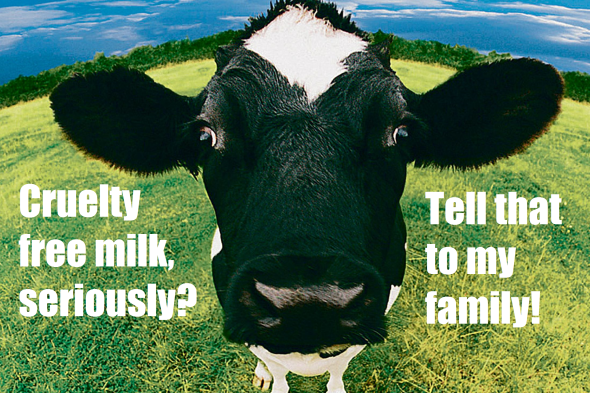
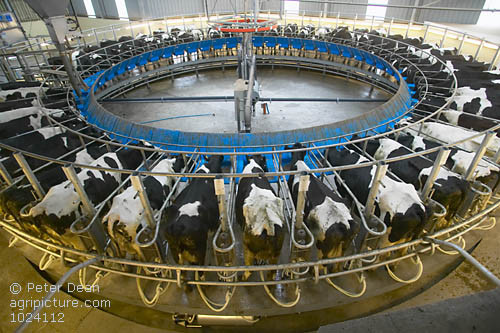
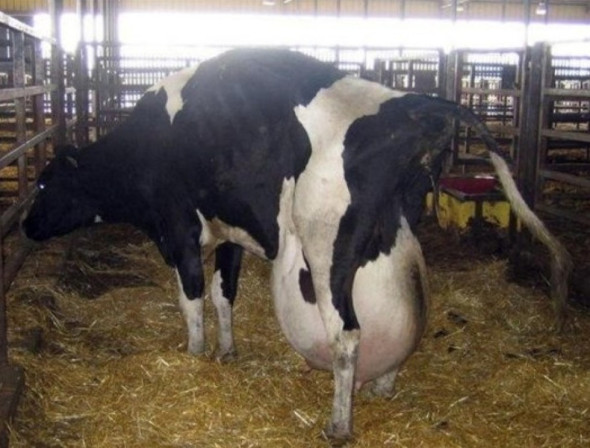
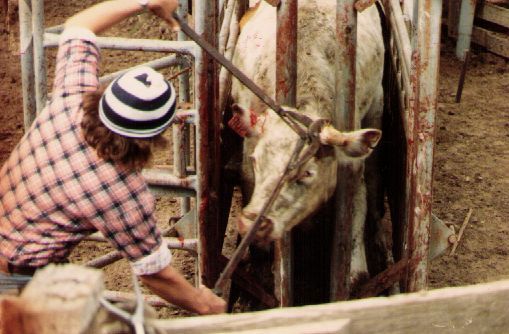
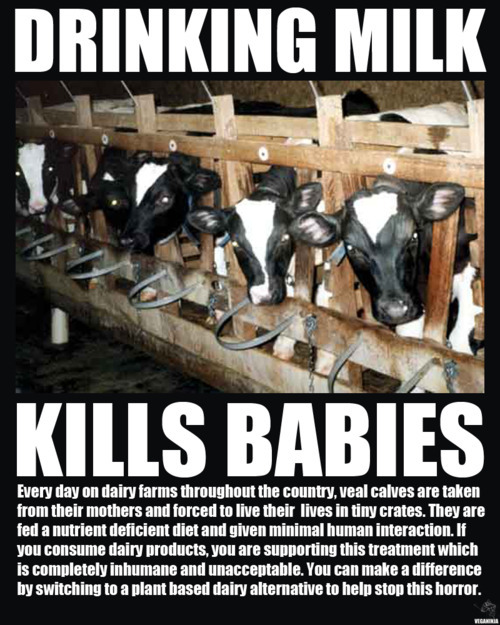
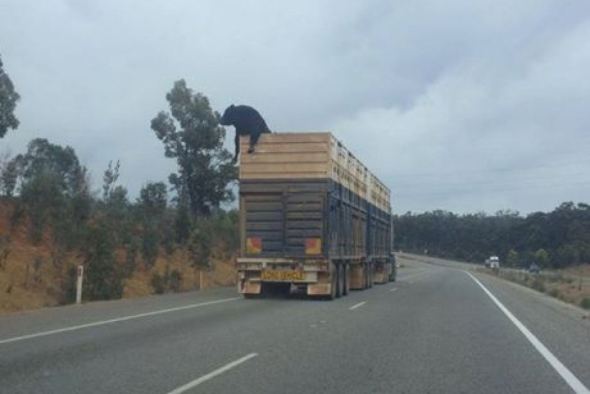
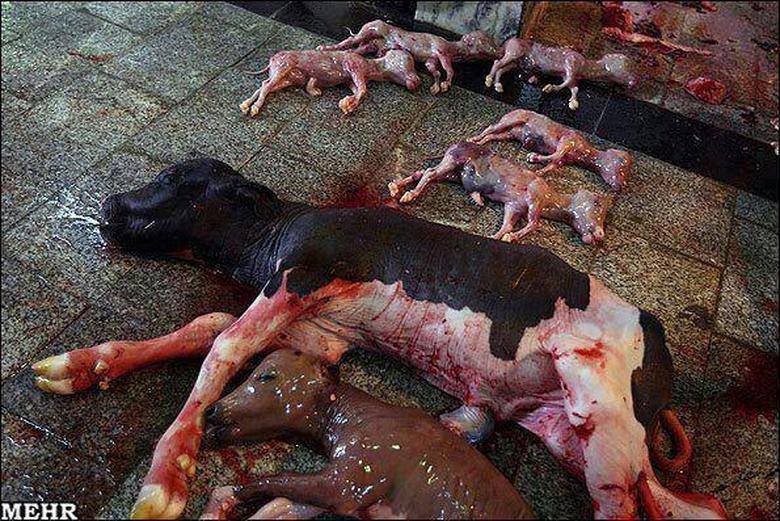


Thank you for your reply, should it merit a response we will respond in due course. This site is owned by International Animal Rescue Foundation and moderation is used.